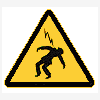-
Posts
23 -
Joined
-
Last visited
Never
daisy8's Achievements
Newbie (1/14)
0
Reputation
-
Hey Cabwood Actually the circuit has a 170 volt section that drives Nixie tubes so I could use this to run the gauge I guess. Daisy
-
Hi again ! Ante, increasing the capacitor only slows the shutdown further. (The biggest I have is a 4700 so I wired 2 in parallel). Cabwood the resistance of the gauge is 554 Ohms both ways. Thanks Daisy
-
Hey guys, thanks for all the reponses. aniruddha thanks, will give it try. Ante I have found a resistor that doesn't lower the gauge reading (1 Ohm) but even with 4700 uF cap power up on the gauge is fast. Shut down is perfect though ! Nice and slow. Cabwood I have openned the gauge up and I can't find any internal resistor. The gauges connections are linked straight to the coil that operates the needle. You are right though that I have connected the cap across the power supply. This causes another problem - shutdown of the gauge looks great but the rest of the circuit shuts down slowly too. So any further suggestions ? I have included a diagram of what I have connected now. All I really need to do is get the slow power down to be a slow power up instead. Thanks again guys Daisy
-
Hey Ante Thanks for the response. I have tried just tried what you suggest. A resistor in series lowers the reading on the gauge. The gauge may only be for show but I still want it to read 12v. A capacitor in parallel has no effect on start up. It has a tiny effect on shut down though but only noticable with a 1000 mic cap. The effect it shows is to delay the gauge from dropping to zero immediately. However it has no effect on the spped the needle moves. What I really want is to have the needle slowly rise to 12v when the power goes on and to slowly go back to zero when the power goes off. Any other ideas ? I do have the design for a triangle wave generator (check the light fader thread) that I might be able to latch once it reaches 12v but I am not having any luck with it yet and would rather use something a little simpler. Thanks again and don't be scared to offer other suggestions - I'll try anything. Daisy
-
Found this circuit too. Might work better.
-
Ok, I will have a play and see what I can get out of it. The gauge is only really for visual effect anyway. I might just adjust the gauge a bit. Atleast I will get a slow power up with it. Thanks again. I will let you know how I go. Daisy
-
Hey Audio, thanks This is basically what I was trying to do with my volt meter (see the slow power up thread) I started this thread because I thought I might be able to use some kind of light fader to slowly activate my volt meter. If I can get your circuit to generate 12 volts and then use a transistor to hold the power at 12 volts it should work. I understand now what you were talking about in the previous thread about opamps. I have never used them before. Thanks again and Merry Christmas Daisy
-
Hi everyone Does anyone have a circuit for fading a 12 volt light globe in and out ? Thanks Daisy
-
Thanks again All I really need is to slow down the increase in voltage across the volt gauge. A linear increase from zero the 12 when the power comes on and then the reverse when the power goes off. I need an automatic pot. If I could somehow start with lots of resistance that decreases after power is given then I would be set ! I have just tried to use a really slow triangle wave generator that latches when the output hits 12 volts but had no real luck with it. Thanks again Daisy
-
Thanks audio No I have tried a capacitor in that way but it does nothing to improve the gauge. Anything else ? Daisy
-
Hi all I have a project and have a set of old style gauges I want to include in it. One of the gauges is a voltmeter but the gauge is not performing the way I would like. When power is supplied the gauge jumps to 12 volts and then bounces back and forth on the gauges internal spring. What I want is for the gauge to slowly rise to 12 volts when turned on and then slowly drop to zero when turned off. This would stop the gauge jittering around. The gauge is purely something interesting to look at a serves no practical purpose but I would like it to read the correct voltage. Any help would be appreciated. Thanks guys Daisy


